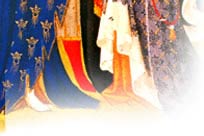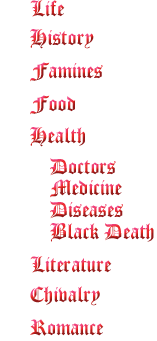 |
|||
 

|
Medicine Arabic anatomical and pharmaceutical knowledge, far greater in scope than that of medieval Europe's learning, was quickly assimilated. However, practical anatomy, viewed best through dissection of corpses, was rarely studied. Treatment varied from physician to physician, but some practices were adopted by much of the continent. Isolation of the sick and contagious was commonplace and possibly the greatest step taken in medieval medicine. Hospitals began to be built in Europe during the 13th century. These early buildings were constructed of whitewashed wood, replaced later with four-story, grand structures with marble-columns. These hospitals rivaled some palaces of the day. Bleeding and the use of leeches to draw "bad blood" from the patient were typical. Some surgeries were performed to cure patients of hernias, cataracts, for the removal of gallstones. Surgery was often more precarious than the actual problem. Folk cures and poultices made from herbs were options for the peasant class. There were those who would risk being called "witch" to provide these remedies, although many found themselves tied to a burning stake. When doctors' treatments failed, the Church was often called to exorcise demons and say prayers and incantations over the patient. |
 |
|
 |
|||
 |
|||